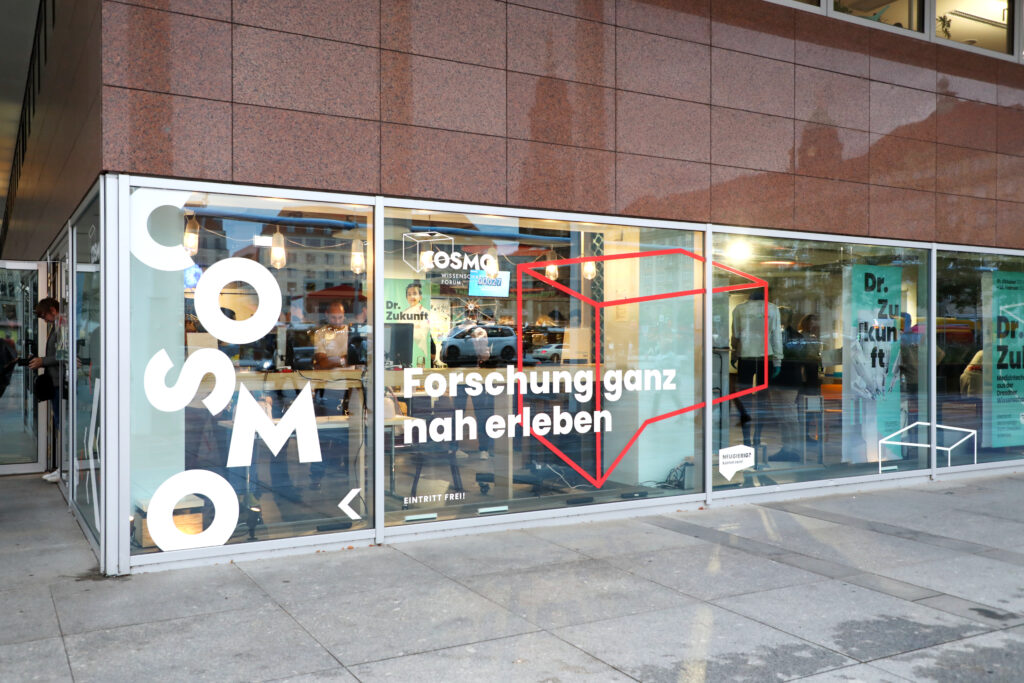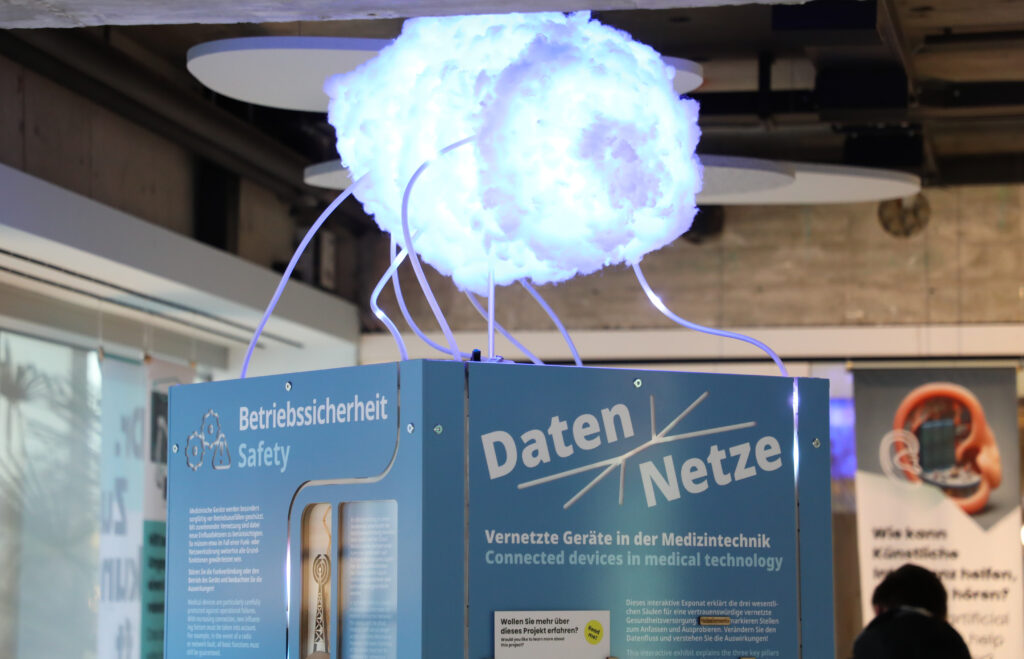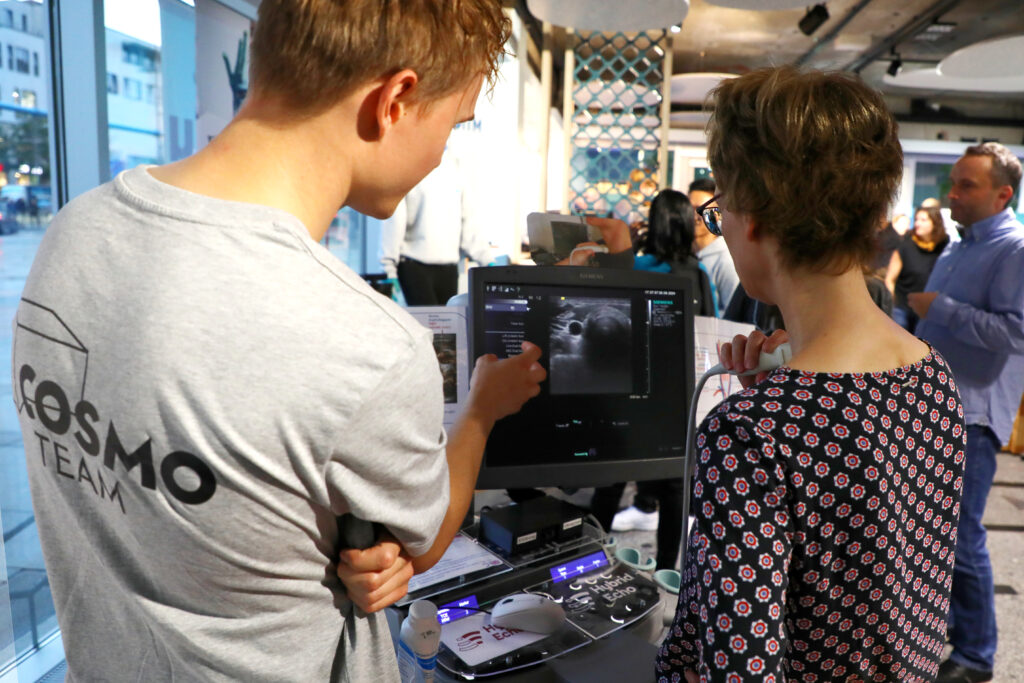Cosmo Science Forum
The COSMO Science Forum located in the middle of Dresden’s city center hosted from October 2024 to February 2025 the exhibition “Dr. Zukunft – Medical Technology from Dresden Science”. Various scientific institutions and research projects showcased interactive exhibits for the visitors. As part of the societal transfer (Q4), the SEMECO projects, Q1 – Secure and trusted system architectures, A2 – Psychoactive, multisensory communication implant and B2 – HybridEcho participated in the exhibition. With interactive exhibits, videos, science comics, games and workshops, the scientists presented their projects in an entertaining way and encouraged visitors to critically engage with the research topics. The topics of the Cluster4Future SEMECO have also been made accessible by the BI for a young target group. In the learning lab of the BI, school classes and groups could explore in interactive workshops that have been designed in close cooperation with the scientists of the cluster. The COSMO Science Forum is organized and curated by the Barkhausen Institut and TU Dresden’s Department of Speculative Transformation, in collaboration with DRESDEN-concept partners, the Dresden Philharmonic, and the Central Library.




